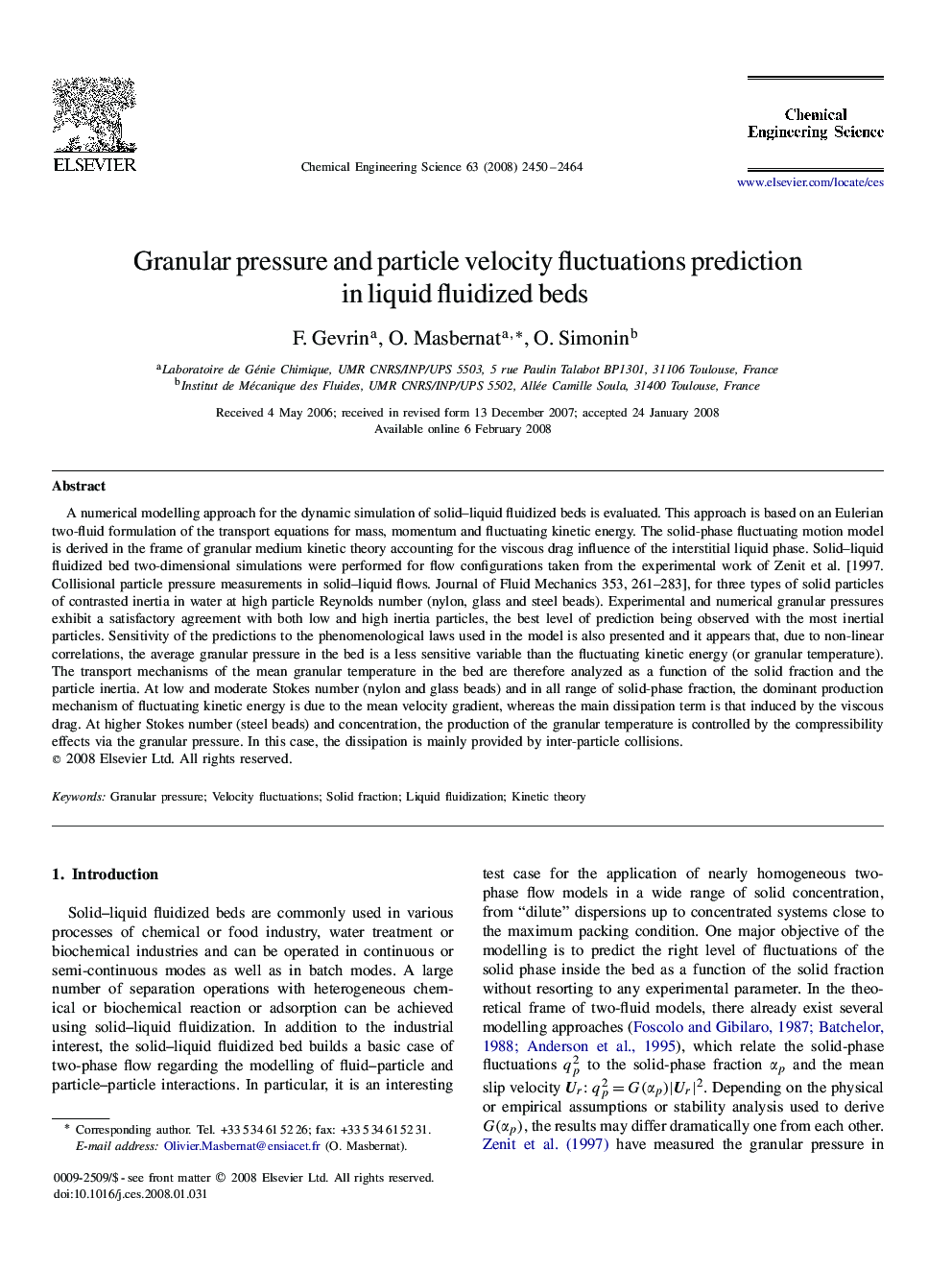| کد مقاله | کد نشریه | سال انتشار | مقاله انگلیسی | نسخه تمام متن |
|---|---|---|---|---|
| 158899 | 457020 | 2008 | 15 صفحه PDF | دانلود رایگان |

A numerical modelling approach for the dynamic simulation of solid–liquid fluidized beds is evaluated. This approach is based on an Eulerian two-fluid formulation of the transport equations for mass, momentum and fluctuating kinetic energy. The solid-phase fluctuating motion model is derived in the frame of granular medium kinetic theory accounting for the viscous drag influence of the interstitial liquid phase. Solid–liquid fluidized bed two-dimensional simulations were performed for flow configurations taken from the experimental work of Zenit et al. [1997. Collisional particle pressure measurements in solid–liquid flows. Journal of Fluid Mechanics 353, 261–283], for three types of solid particles of contrasted inertia in water at high particle Reynolds number (nylon, glass and steel beads). Experimental and numerical granular pressures exhibit a satisfactory agreement with both low and high inertia particles, the best level of prediction being observed with the most inertial particles. Sensitivity of the predictions to the phenomenological laws used in the model is also presented and it appears that, due to non-linear correlations, the average granular pressure in the bed is a less sensitive variable than the fluctuating kinetic energy (or granular temperature). The transport mechanisms of the mean granular temperature in the bed are therefore analyzed as a function of the solid fraction and the particle inertia. At low and moderate Stokes number (nylon and glass beads) and in all range of solid-phase fraction, the dominant production mechanism of fluctuating kinetic energy is due to the mean velocity gradient, whereas the main dissipation term is that induced by the viscous drag. At higher Stokes number (steel beads) and concentration, the production of the granular temperature is controlled by the compressibility effects via the granular pressure. In this case, the dissipation is mainly provided by inter-particle collisions.
Journal: Chemical Engineering Science - Volume 63, Issue 9, May 2008, Pages 2450–2464